Themed collection Stem Cells

Journal of Materials Chemistry B themed issue: stem cells
Guest editors Laura J. Suggs and Kacey G. Marra introduce this Journal of Materials Chemistry B themed issue on stem cells.

J. Mater. Chem. B, 2016,4, 3420-3421
https://doi.org/10.1039/C6TB90065H
Bone-marrow mimicking biomaterial niches for studying hematopoietic stem and progenitor cells
This review discusses the considerations and approaches that have been employed for designing biomaterial based cultures for replicating the hematopoietic stem and progenitor cell niche.

J. Mater. Chem. B, 2016,4, 3490-3503
https://doi.org/10.1039/C5TB02644J
Pluripotent stem cell derived hepatocytes: using materials to define cellular differentiation and tissue engineering
Pluripotent stem cell derived liver cells (hepatocytes) represent a promising alternative to primary tissue for biological and clinical applications.

J. Mater. Chem. B, 2016,4, 3433-3442
https://doi.org/10.1039/C6TB00331A
Application of biomaterials to in vitro pluripotent stem cell disease modeling of the skeletal system
Disease-specific pluripotent stem cells can be derived through genetic manipulation of embryonic stem cells or by reprogramming somatic cells (induced pluripotent stem cells).
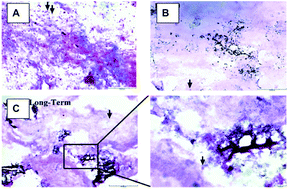
J. Mater. Chem. B, 2016,4, 3482-3489
https://doi.org/10.1039/C5TB02645H
Biomaterial strategies for controlling stem cell fate via morphogen sequestration
This review explores the role of protein sequestration in the stem cell niche and how it has inspired the design of biomaterials that exploit natural protein sequestration to influence stem cell fate.
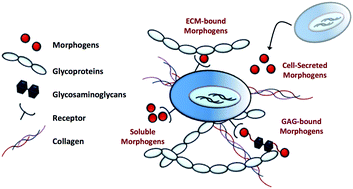
J. Mater. Chem. B, 2016,4, 3464-3481
https://doi.org/10.1039/C5TB02575C
Biomaterials for pluripotent stem cell engineering: from fate determination to vascularization
Recent advancements in materials science and engineering may hold the key to overcoming reproducibility and scalability limitations currently hindering the clinical translation of stem cell therapies.

J. Mater. Chem. B, 2016,4, 3454-3463
https://doi.org/10.1039/C5TB02658J
Three-dimensional culture of small-diameter vascular grafts
Analysis of efforts to engineer 3D small-diameter (<6 mm) vascular grafts, indicating the importance of stem cells, co-culture, and pulsatile flow.
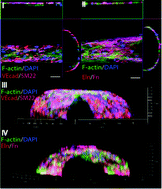
J. Mater. Chem. B, 2016,4, 3443-3453
https://doi.org/10.1039/C6TB00024J
Oxygen delivering biomaterials for tissue engineering
Various technologies have been developed to increase oxygen delivery in vivo and enhance the effectiveness of tissue engineering strategies. The article provides an overview of the underlying mechanisms driving these technologies.
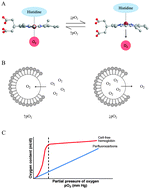
J. Mater. Chem. B, 2016,4, 3422-3432
https://doi.org/10.1039/C5TB02635K
The effect of hypoxia and laminin-rich substrates on the proliferative behavior of human neural stem cells
Human neural stem cells cultured on laminin and Matrigel under hypoxia significantly increase both the stem cell density and the percentage of activity proliferating cells.

J. Mater. Chem. B, 2016,4, 3509-3514
https://doi.org/10.1039/C5TB02701B
Low molecular weight gels induced differentiation of mesenchymal stem cells
Four low molecular weight gels (LMWGs) with different moduli were fabricated as scaffolds to investigate the differentiation of mesenchymal stem cells (MSCs).

J. Mater. Chem. B, 2016,4, 3504-3508
https://doi.org/10.1039/C5TB02546J
Bioactive SiO2@Ru nanoparticles for osteogenic differentiation of mesenchymal stem cells via activation of Akt signaling pathways
The surface chemistry of materials has an interactive influence on cell behavior.

J. Mater. Chem. B, 2016,4, 4389-4401
https://doi.org/10.1039/C5TB01898F
Impact of TNF and IL-1β on capillary networks within engineered human adipose tissues
Inflammatory cytokines lead to capillary network disorganization and secreted factor modulation within human microvascularized engineered adipose tissues.

J. Mater. Chem. B, 2016,4, 3608-3619
https://doi.org/10.1039/C6TB00265J
Laminar ventricular myocardium on a microelectrode array-based chip
Micromolded gelatin can be used to engineer laminar human myocardium on microelectrode array chips for electrophysiological studies and drug testing.

J. Mater. Chem. B, 2016,4, 3534-3543
https://doi.org/10.1039/C6TB00324A
Dual-crosslinked hydrogel microwell system for formation and culture of multicellular human adipose tissue-derived stem cell spheroids
A novel biodegradable, biocompatible alginate-PEG hydrogel microwell system was developed with tailorable microwell physical and biochemical properties to control the uniform formation and behavior of three-dimensional multicellular human adipose tissue-derived stem cell spheroids.
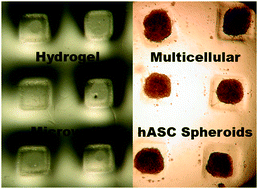
J. Mater. Chem. B, 2016,4, 3526-3533
https://doi.org/10.1039/C6TB00064A
Environmental manipulation to promote stem cell survival in vivo: use of aggregation, oxygen carrier, and BMP-2 co-delivery strategies
While mesenchymal stem cell (MSC)-based strategies for critically-sized bone defect repair hold promise, poor cell survival in vivo remains a significant barrier to the translation of these therapeutics.

J. Mater. Chem. B, 2016,4, 3594-3607
https://doi.org/10.1039/C5TB02471D
Substrate modulus regulates osteogenic differentiation of rat mesenchymal stem cells through integrin β1 and BMP receptor type IA
Osteoblast differentiation of mesenchymal stem cells is regulated by both soluble factor (e.g., bone morphogenetic proteins (BMP)) and mechanically transduced signaling, but the mechanisms have only been partially elucidated.
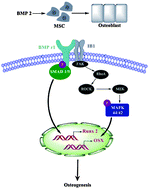
J. Mater. Chem. B, 2016,4, 3584-3593
https://doi.org/10.1039/C5TB02747K
Alginate encapsulation of chitosan nanoparticles: a viable alternative to soluble chemical signaling in definitive endoderm induction of human embryonic stem cells
Chitoson nanoparticle augmented encapsulated alginate (CNPEA) induces definitive endoderm (DE) differentiation of human embryonic stem cells without growth factor supplementation.

J. Mater. Chem. B, 2016,4, 3575-3583
https://doi.org/10.1039/C5TB02428E
Development of a cell delivery system using alginate microbeads for tissue regeneration
Alginate microbeads incorporating adipose-derived stem cells (ASCs) have potential for delivering viable cells capable of facilitating tissue regeneration.

J. Mater. Chem. B, 2016,4, 3515-3525
https://doi.org/10.1039/C6TB00035E
Mechanical loading inhibits hypertrophy in chondrogenically differentiating hMSCs within a biomimetic hydrogel
Three dimensional hydrogels are a promising vehicle for delivery of adult human bone-marrow derived mesenchymal stem cells (hMSCs) for cartilage tissue engineering.
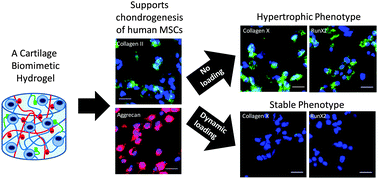
J. Mater. Chem. B, 2016,4, 3562-3574
https://doi.org/10.1039/C6TB00006A
Bioactive natural protein–hydroxyapatite nanocarriers for optimizing osteogenic differentiation of mesenchymal stem cells
Core–shell HA–silk composite nanoparticles as BMP-2 carriers show superior drug loading capacity and sustained release. The improved osteo-differentiation of stem cells on the carriers suggested a promising approach to designing bioactive nanocarrier systems with enhanced functions.

J. Mater. Chem. B, 2016,4, 3555-3561
https://doi.org/10.1039/C6TB00509H
Nanoengineered biomimetic hydrogels for guiding human stem cell osteogenesis in three dimensional microenvironments
We report the development of a nanoclay-rich bioactive hydrogel for bone regeneration therapy applications.

J. Mater. Chem. B, 2016,4, 3544-3554
https://doi.org/10.1039/C5TB02745D
About this collection
Stem cell therapies are becoming more prevalent throughout the world and are being investigated to treat a host of diseases via both intravenous injections as well as localized delivery. It is becoming increasingly recognized that the extracellular environment to which stem cells are exposed may be critical not only as delivery vehicles but also to modulate cell identity and function. This themed issue, guest edited by Professor Kacey Marra (University of Pittsburgh, USA) and Professor Laura Suggs (University of Texas at Austin, USA), focuses on the broad range of stem cell therapies and their interactions with various biomaterials. Topics highlighted include biomaterial interactions with mesenchymal, amniotic, embryonic and induced pluripotent stem cells.